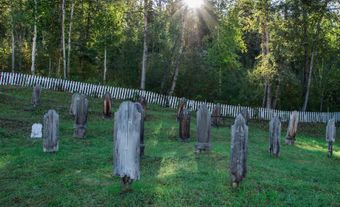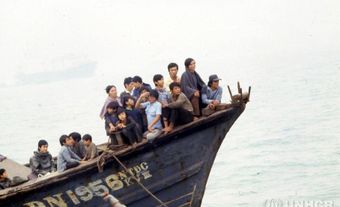
“Today we are gathered together as one, to bury someone’s son,” said Governor General Adrienne Clarkson. “We do not know whose son he was…. We do not know where he came from.”
Clarkson was speaking on 28 May 2000, at the burial ceremony for Canada’s Unknown Soldier. The creation of the Unknown’s tomb, at the foot of the National War Memorial in downtown Ottawa, was a grand act of national remembrance — a grateful nation making peace with its war dead.
More than 118,000 Canadians have died fighting for their country in overseas wars — including the First World War.
About 28,000 of those warriors were lost in unknown graves. Many were sailors whose ships were torpedoed at sea. Another 11,285 were killed in France during the First World War, their bodies either blown apart by shells or lost in the mud, mire and rain-filled bomb craters of the Western Front.
Each of those 11,285 names are inscribed today on the massive limestone memorial atop Vimy Ridge, site of Canada’s most famous military victory (see Battle of Vimy Ridge). One of them, almost certainly, is the soldier eulogized by Adrienne Clarkson, the man whose remains now lie inside the ornately-carved Tomb of the Unknown Soldier at the National War Memorial.
Perhaps he is Private John Henry Outhwaite of Toronto, aged 20, who was killed on 9 April 1917 during the attack on Vimy Ridge? Or maybe he is Private Robert Owen of Manitoba, 29, who also died that Easter Monday at Vimy? Neither man has a known grave.
All we know for sure is that the Unknown Soldier was exhumed in May 2000 from an unmarked Canadian grave at the Cabaret-Rouge war cemetery in France. Cabaret-Rouge holds the graves of more than 7,000 British Empire troops, many of them Canadians who fought and died at Vimy.
When the Canadian government went looking for the remains of a soldier to repatriate to Canada for the Unknown’s tomb — following lobbying for the project by the Royal Canadian Legion — it decided that a soldier from Vimy Ridge would be an ideal representative.
The Commonwealth War Graves Commission (CWGC) — which looks after Canada’s First and Second World War overseas graves — wanted several promises from Ottawa, including that the government would never again ask for another unknown to be exhumed and sent back to Canada. And, as insurance against the first condition, that Ottawa never make any effort, using DNA or other technology, to identify the remains of the first exhumed soldier.
Canada agreed, and in May 2000, the CWGC dug up the nearly-complete skeletal remains from an unmarked Canadian grave at Cabaret-Rouge, also finding some brass uniform badges, clearly identifying the soldier as Canadian, among the bones.
Days later, an official delegation travelled from Ottawa to France to repatriate the remains — Operation Memoria — and to collect a silver cupful of soil from the soldier’s former resting place. Ceremonies were held at the cemetery and at Vimy Ridge itself, and the remains came home to Canada in a flag-draped casket in the belly of a government Airbus.
In the following days, the remains lay in state in Parliament, where the public paid its respects. And on 28 May, they were interred in the newly-crafted tomb at the National War Memorial, along with the cup of soil brought back from France.
The Unknown Soldier from Cabaret-Rouge represents not only the thousands of unknown dead from the First World War, but all of Canada’s 28,000 soldiers lost to unmarked graves around the world. Some lie like dust at the bottom of oceans, some lie, still undiscovered, in farmer’s fields in France and Flanders.
The warrior’s tomb is also a stark reminder of the great price paid by Canadians in the wars of the past 100 years and beyond. As Adrienne Clarkson said in her eulogy:
“Was [he from] the Prairies, whose rolling sinuous curves recall a certain kind of eternity? Was he someone who loved our lakes and knew them from a canoe? Was he someone who saw the whales at the mouth of the Saguenay? Was he someone who hiked in the Rockies or went sailing in the Atlantic or in the Gulf Islands?
“The only certainty about him is that he was young. If death is a debt we all must pay, he paid before he owed it.”


 Share on Facebook
Share on Facebook Share on X
Share on X Share by Email
Share by Email Share on Google Classroom
Share on Google Classroom







